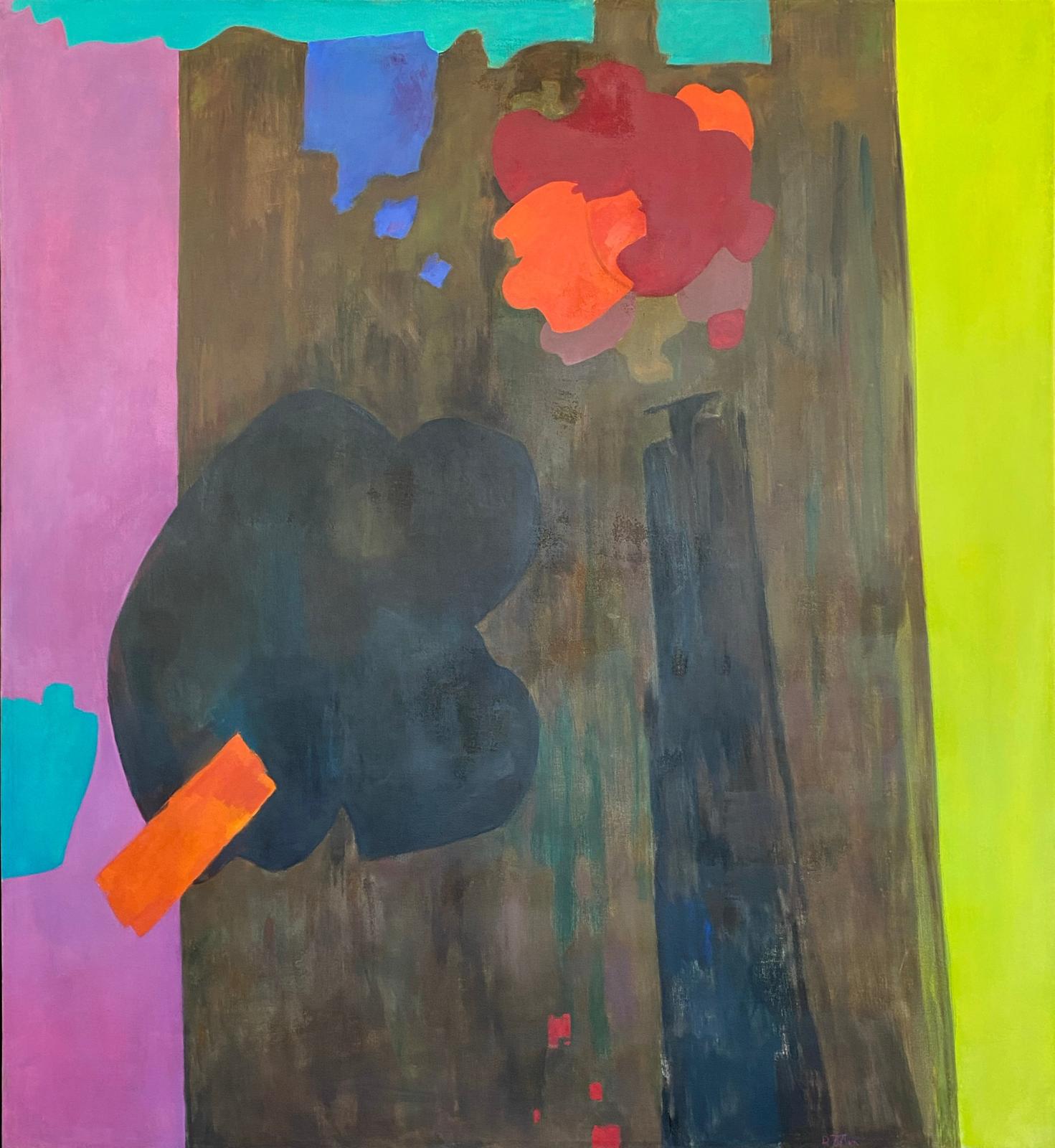







Framed: 73 1/2 x 69 1/4 inches
artist
1961 marks a pivotal moment in Totten’s career, departing from the subdued desert-inspired color palette that had characterized his previous work to embrace a more flamboyant and adventurous aesthetic, embarking on a creative exploration that resonated with the buoyant spirit of the era. This marked shift coincided with Totten’s deepening engagement with Synchromism, a movement spearheaded by Stanton MacDonald-Wright, under whose tutelage Totten had studied. Drawing inspiration from MacDonald-Wright, Totten absorbed the foundational principles of Synchromism, yet he always approached them as a catalyst for his own distinctive artistic vision.
Totten’s artistic process appears deceptively effortless, mirroring the demeanor of the man behind the brush. Modest, soft-spoken, and gentle, Totten embodied humility in his approach to his craft. Yet, beneath this unassuming exterior lay a profound commitment to his artistry. Immersed in the act of painting, Totten dedicated himself wholeheartedly to his practice, infusing each canvas with a palpable sense of daring and conviction.
To liken Totten’s oeuvre to that of luminaries such as Clifford Still or Edward Dugmore may seem audacious at first glance, however, upon closer examination, one discerns a shared mastery of abstract expressionism and a profound depth of artistic expression. Totten stands shoulder to shoulder with these titans, his capacity to produce profound abstract works attesting to his enduring legacy as a visionary artist.
Description
….I follow the impressionists through Gauguin and Matisee, Delaunay, Wright and Russell. I believe with them that the real craft of the 20th century is color and that it is possible to build a kind of visual music using scale and chords…thus I am not afraid of using the words “lyric” or “poetic” used in connection to my work.
Don Totten
Floating Forms from the 1960s is an exceptional example of what abstract painting was striving toward in this period. Abstract artists were informed by the artists before them but were creating visual structures that were freed from content and in search of expression that was unique. This composition is one which is highly successful at getting the viewer’s eye to react. Just like its title, it is mainly about forms, but he is also working out a structure for it to speak to us. And if you think about the realm of abstract paintings and compare this composition to what you have seen, it becomes evident that this is a memorable and impressive work. The brilliancy of his building color from the outer edges of the canvas with luminous light toward a center that is earthy and rich in depth is truly beautiful.
Totten was a West Coast abstractionist and there are two pieces of information that allows us to better understand this masterpiece. Totten had made a trip in 1959 to Arizona and New Mexico and he was inspired in his work by the yellow and brown suggestion of the desert. His canvases while completely abstract are derivative of the landscape he saw before him. We see this in Color Structure and can feel that he was using the desert as a catalyst along with music and the energy of life itself to create a composition that was indicative of what he synthesized this all to a culminating expression. Back in the day an art critic wrote of his work “abstract floating forms suspended in a filmy atmosphere of joyousness.”
Merle Schipper in his essay in the catalogue on Don Totten describes this work “Here, clustered planes in the central area are suspended over open, airy, limitless space with clear yellows appearing to break through, of surrealist Roberta Matta, the implication of a figure.”
The second piece of information is the understanding of how instrumental an artist such as Stanton MacDonald Wright was at the time on artists. His Sychromist works and explorations of color are evident in this work. As would be the work of Robert and Sonia Delaunay and potentially Kandinsky. The success in art comes when an artist can draw from their various pools of inspiration but then create of work which is so recognizably their own.
If one collects work from this period, there is wealth of great work that was created on the West Coast. It was a parallel school and response to New York. One of the main differences though when you study it is that the West Coast artists came from a place of space and light due to their geography that the East Coast did not. Their work often has more of a kinship to nature and earth than the Easterns. This can be evidenced in the work of Clifford Still, Edward Dugmore and an artist like Totten.







